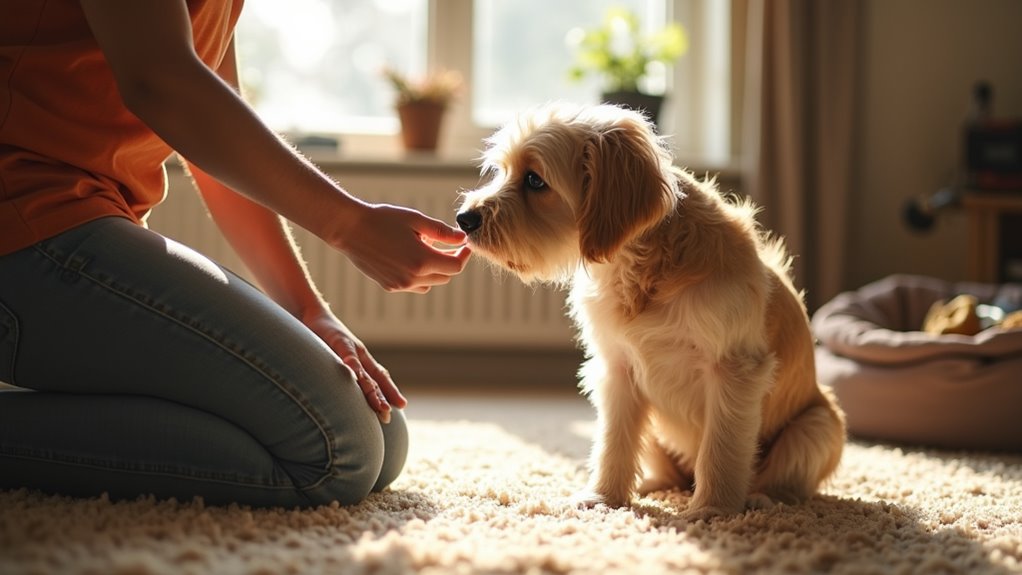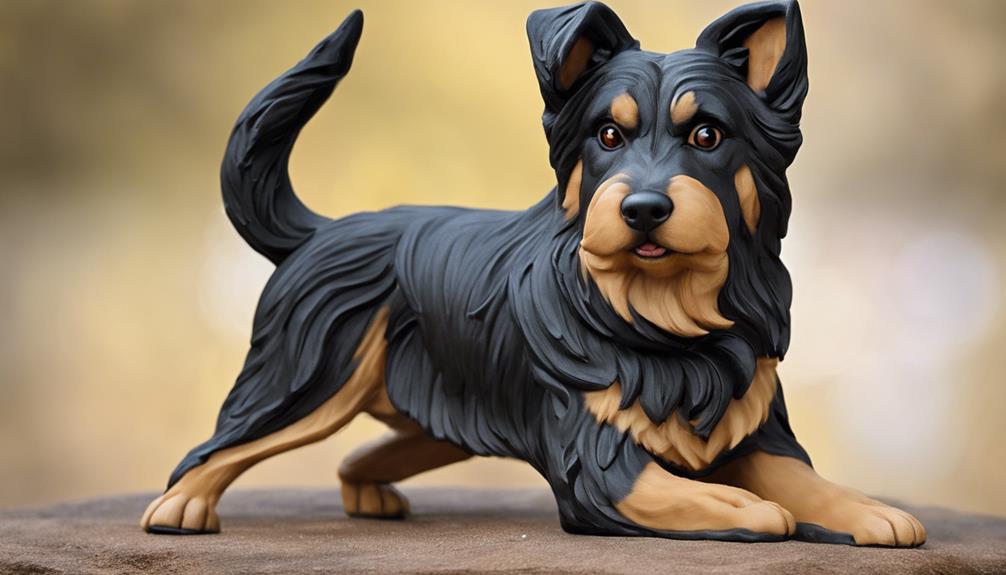When adopting a rescue dog, prepare to build trust through positive reinforcement, patience, and consistency. Gradually introduce your dog to new environments and experiences, using treats and praise to boost confidence. Keep training sessions fun and short to prevent overwhelm, and monitor signs of stress to adjust your approach. Establish routines to create a sense of safety. For more tips on ensuring a smooth progression and fostering a loving bond, keep exploring ways to support your new furry friend.
Key Takeaways
- Introduce your home gradually, providing a calm environment to reduce stress and build trust.
- Use positive reinforcement consistently to encourage good behavior and foster a safe, loving bond.
- Socialize your dog slowly with new sights, sounds, and experiences to build confidence and reduce fear.
- Maintain a routine for feeding, walks, and training to create stability and predictability.
- Be patient and gentle during the adjustment period, allowing the dog to warm up at its own pace.

Adopting a rescue dog can be a rewarding experience that transforms both your life and the dog’s. However, to facilitate a smooth transition, understanding how to effectively handle training techniques and socialization strategies is essential. When you bring your new furry friend home, you’ll want to focus on establishing trust and safety right away. Using positive reinforcement is one of the most effective training techniques. Reward your dog with treats, praise, or toys whenever they display good behavior. This approach encourages them to repeat those behaviors and helps build a strong bond based on trust. Consistency is key; set clear rules and stick to them. This helps your dog understand expectations and reduces confusion or anxiety. Keep training sessions short and frequent, making them fun and engaging rather than overwhelming. Additionally, selecting appropriate training tools can enhance the effectiveness of your training sessions and ensure safety for both you and your dog. Incorporating positive reinforcement methods can significantly improve your training outcomes and foster a loving relationship. Socialization strategies are equally crucial, especially for rescue dogs that may have experienced trauma or neglect. You want your dog to feel comfortable around people, other animals, and new environments. Start by introducing your dog to new experiences gradually. Begin with calm, positive interactions and avoid overwhelming them with too many stimuli at once. Use controlled environments where your dog can observe and explore without feeling threatened. Encourage calm behavior through gentle praise and treats, and be patient if they’re slow to warm up. Expose your dog to different sights, sounds, and smells in a controlled manner, always watching for signs of stress. Over time, these controlled exposures help your dog develop confidence and reduce fear-based behaviors.
Frequently Asked Questions
How Can I Help My Rescue Dog Build Trust Quickly?
To help your rescue dog build trust quickly, focus on creating a safe environment. Use positive reinforcement to reward good behavior, making your dog feel secure and loved. Maintain consistent routines, so your dog knows what to expect and feels more comfortable. Be patient and gentle, giving your dog time to adjust. Over time, these strategies will strengthen your bond and foster trust naturally.
What Are Signs of Hidden Health Issues in Rescue Dogs?
A picture is worth a thousand words, so watch your rescue dog closely. Signs of hidden health issues include lethargy, poor coat condition, and unusual behavior. Poor dog nutrition can contribute to these problems. Keep an eye out for persistent vomiting or diarrhea, which may signal underlying issues. Use gentle behavior modification to encourage trust, and always consult a vet if you notice red flags, ensuring your pup stays healthy and happy.
How Should I Introduce My Rescue Dog to Other Pets?
When introducing new pets, you should do so gradually to manage multi-pet households smoothly. Keep the dogs on leashes during the first meetings, and let them sniff each other while observing their body language. Gradually increase their time together in neutral spaces. Always supervise interactions, reward calm behavior, and be patient. This approach helps your rescue dog feel secure and builds positive relationships with your other pets.
What Supplies Are Essential for a Rescue Dog’s First Day?
Imagine you’re launching a new adventure—your rescue dog’s first day. You’ll need essential supplies like high-quality dog food to fuel their journey and grooming supplies to keep them comfortable. Bring a cozy bed for a safe haven, bowls for food and water, and toys to build trust. These essentials set the stage for a smooth start, making your new companion feel loved and secure from the very first moment.
How Do I Manage Separation Anxiety in a New Rescue Dog?
To manage separation anxiety, establish consistent training routines and use crate training to create a safe space. Gradually get your dog used to being alone by starting with short absences and slowly increasing them. Always keep departures and arrivals low-key to avoid stress. Providing toys or treats in the crate can help your dog feel secure. Over time, these steps build confidence and reduce separation anxiety, making your dog more comfortable when alone.
Conclusion
You’re about to commence on the most epic adventure of your life—raising a rescue dog. With patience, love, and a sprinkle of humor, you’ll turn this furry stranger into your loyal, lifelong best friend. Remember, every wag, woof, and tiny paw print is a badge of honor. Get ready for the most heartwarming, hilarious, and rewarding journey imaginable—you’re officially a rescue hero in the making!










